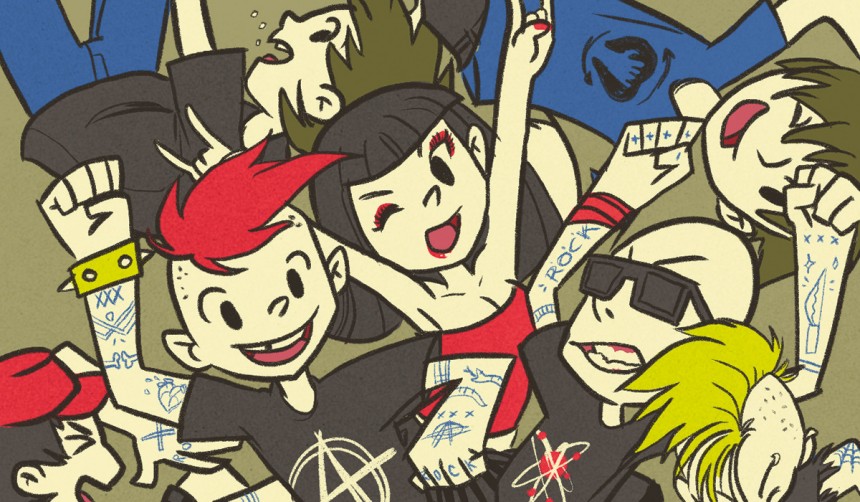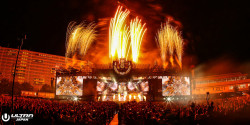
The death of meaning, in a way, can bring some things full circle.
In the grand scheme of things, moshing doesn’t have much meaning—nor do most dances inspired by pop culture. Generally devoid of both politics and spirituality, it doesn’t add up to much as a social statement. So why can it seem so upsetting to see a new generation adopt a dance spawned in your own generation, and make it their own?
Developed in the early 1980s to accompany U.S. hardcore punk music—just as hardcore punk developed in California as an answer to the original punk of the 1970s—moshing emerged as an evolution of pogoing and slam dancing. While the creation of pogoing has been credited to Sid Vicious of the Sex Pistols (bouncing up and down in an audience to get a peek at a band onstage), the originator of moshing is lost in time.
Regardless, it was love at first sight for me. At a gig by Canadian punk band S.N.F.U. in 1986, I watched an empty circle form suddenly amid the crowd as the band tore into one of its characteristically fast-paced numbers. Seconds later, two young ladies from opposite sides of the circle ran toward each other like atoms in a nuclear reactor. Milliseconds later, dozens of other dancers engulfed them, following their lead. The group gyrated around the center of the circle in a breakneck combination of goose-stepping and childlike skipping. Like a human vortex without a drain, it fed off the music, visually representing it—validating it.
By the late ’80s, bands like Nirvana and the Melvins had ignited the second wave of American punk, and by the early ’90s they were joined by more mainstream bands like Pearl Jam, while the media covered their ilk with the wildly-popular umbrella term, “grunge.”
As subcultures gain popularity, so do they become infected by outsiders who don’t know the “rules.” While such a dance might seem devoid of rules, veterans will inform you that, in the tightly- knit punk scenes of the ’80s, the safety of your fellow dancer was paramount. If one person fell, others hurriedly picked them up. And although some singers added to the problem by openly asking audiences to form a “pit,” many more musicians spoke out against violence, some condemning moshing altogether.
But as the ’90s progressed and moshing became increasingly mainstream, the degrees of separation between audience members grew; it became less obvious to look out for fellow dancers. Even bands like Limp Bizkit saw fans die as a result of mosh pits at their concerts. Canadian punk legends Propagandhi voiced their disgust in a lyric about “Amy Grant mosh crews.”
As the story unfurled, it surprised next to no one when moshing broke out at heavy metal concerts. Metal being punk’s close cousin—or arguably, its father—hardly anyone in the punk community begrudged metal fans the right to mosh.
However, the nail in the proverbial coffin was smashed down irrevocably for me the other day, as I watched a mosh pit appear on the television broadcast of a J-pop concert.
As BabyMetal—a “metal band” fronted by three teenage “idols”—took to the stage, their backing musicians launched into an aggressive musical vamp while the central vocalist raised her arms together in front of her. As she slowly parted them, like Moses did the Red Sea, the audience dispersed, revealing an empty circle in the middle of the crowd. Then, as my eyes widened in disbelief, the vocalist squealed some marching orders, and fans inside the previously empty circle swarmed like a human vortex without a drain.
I finally did see a drain, though: a drain of meaning.







